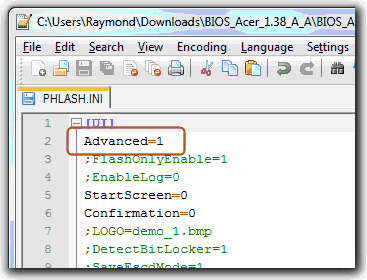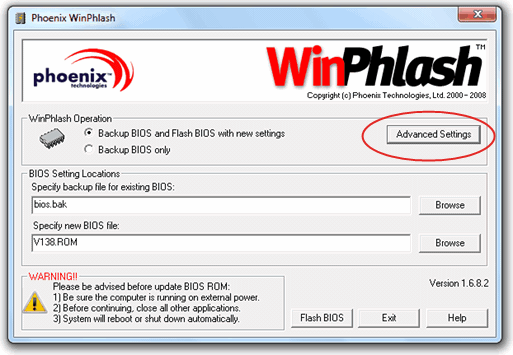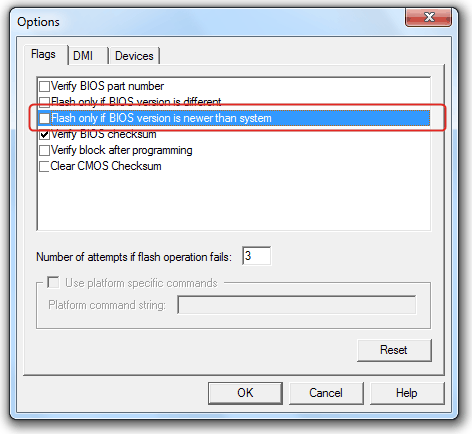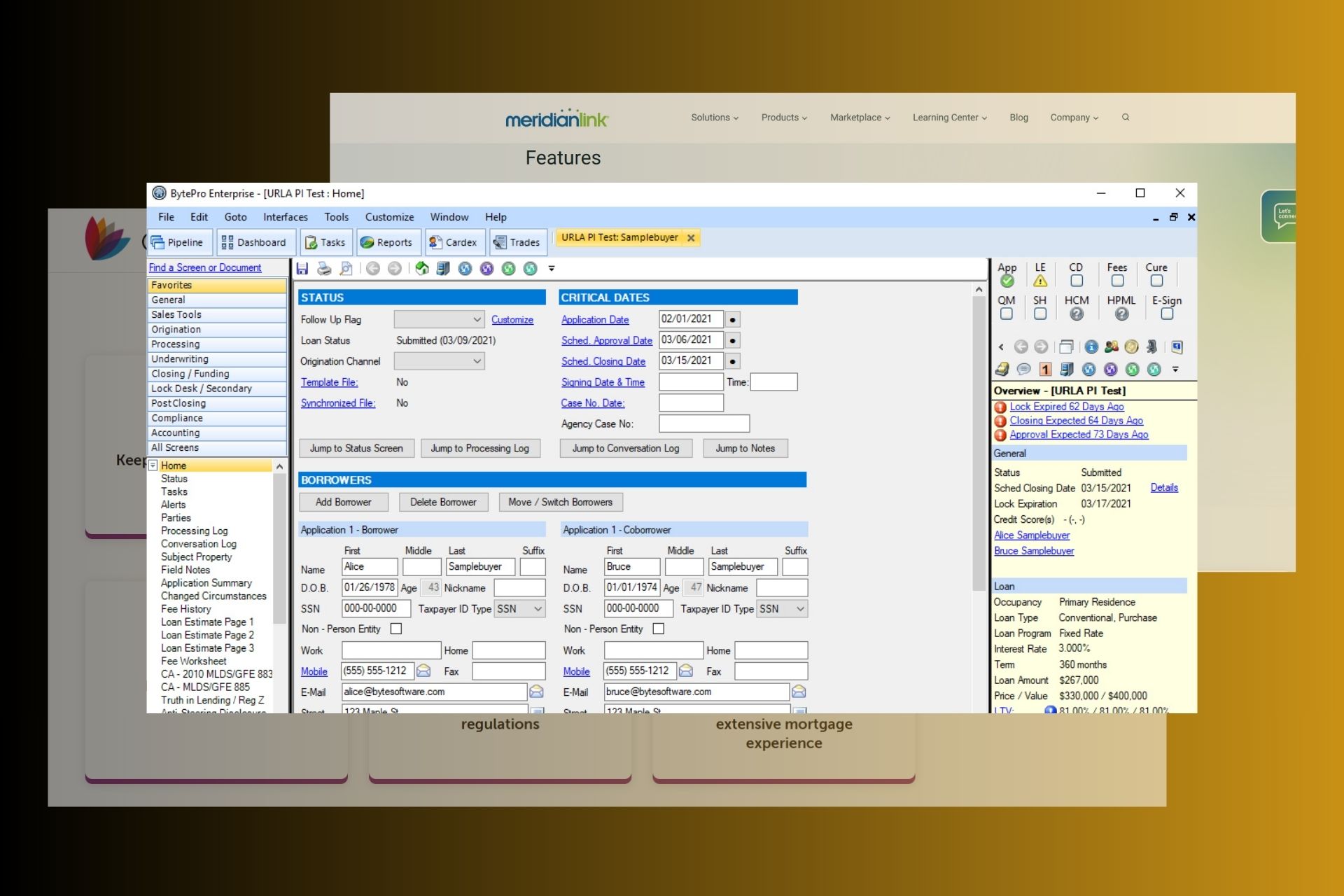How to Downgrade a Phoenix BIOS using WinPhlash

Below, I’ll walk you through how to update or downgrade your BIOS using Phoenix WinPhlash.
You should only update or downgrade your BIOS if you’re experiencing hardware compatibility issues or bugs.
If everything is running smoothly, there’s no need to make any changes. Downgrading may be required if a newer BIOS version causes problems, like hardware not being recognized.
For example, I ran into a “No battery detected” error on my Acer laptop after a BIOS update, and downgrading fixed the issue.
How to Update or Downgrade Your BIOS Using Phoenix WinPhlash
- If you don’t already have it, Download Phoenix WinPhlash and run the exe to extract.
- Open the folder where the WinPhlash tool is located and edit the PHLASH.INI file with a text editor like Notepad or Notepad++.
- Look for the line Advanced=0 which is normally at the second line, change it to Advanced=1 and save.

- Now run WinPhlash.exe and you will notice an extra “Advanced Settings” button at the top right of the program. Click on the Advanced Settings button.

- Uncheck the “Flash only if BIOS version is newer than system” box and click OK.

Now you can successfully flash your BIOS with an older version without getting the error message.
Although on the odd occasion a new feature may be included in an update, this is not all that common and the majority of the time, a new BIOS will only include hardware bug fixes or compatibility updates.
It is always a good idea to check the motherboard or laptop manufacturer’s website before attempting to flash ANY new BIOS to check if any issues you do currently encounter, have actually been addressed. Again, I would like to stress that normally you do NOT need to upgrade or downgrade your BIOS if everything is working fine on your computer.
If you’re dealing with other BIOS related tools, here’s our quick guide addressing boot issues and the need to boot from USB or CD-ROM.





User forum
21 messages